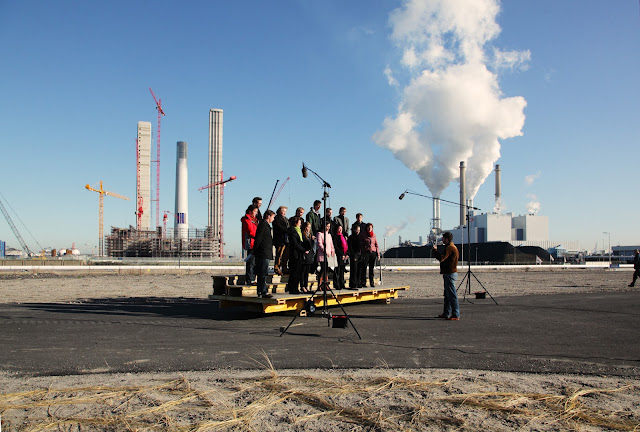Latitudes’ “out of office” 2024-25 season
Fri, Jul 25 202511 September 2024: After three full on days touring the fifteen venues of Manifesta 15 in Barcelona, L'Hospitalet de Llobregat, El Prat de Llobregat, Cornellà, Sant Cugat, Santa Coloma de Gramenet, Sant Adrià del Besòs, Mataró, Sabadell, Terrassa and Granollers, Max Andrews (of Latitudes) and Angel Lambo share their highlights on frieze.com
11–13 September 2024: Press trip to Apertura, Madrid’s Gallery Weekend. Gallery highlights included solo exhibitions of Karlos Martínez B. at FormatoCómodo [photographed below, Max’s review published in Artforum’s December issue]; Jerónimo Elespe at Maisterravalbuena; Suzanne Treister at The Ryder Projects; or Patricia Gómez and María Jesús González at 1 Mira Madrid. Elsewhere in town, we managed to catch the last days of the fantastic “Art and Social Change in Spain (1885-1910)” at the Museo del Prado (annoyingly, no photos allowed) and the opening of Jacobo Castellano at Alcalá 31.
19–22 September 2024: Third art event of the month. This time, we are celebrating the 10th anniversary of the Barcelona Gallery Weekend. Highlights include Carles Congost at House of Chappaz; Rasmus Nilausen at Ethall (L'Hospitalet); Jochen Lempert at ProjecteSD; and exhibitions at non-commercial galleries, such as Victor Jaenada at Tecla Sala.
28 September 2024: Trip to Vic to attend Francesc Ruiz’s excellent “3 months, 3 weeks, 3 days” solo show at ACVIC Centre d'Arts Contemporànies:
“Francesc Ruiz's exhibition ‘3 months, 3 weeks, 3 days’ tackles the friction between animal exploitation, the food and tannery industries, logistics infrastructures, and the natural environment in the plain of Vic and its surrounding areas. The project opens up the already-existing imaginaries drawn from the history of comics, alternative hentai, and anti-speciesist feminism. The exhibition occupied three spaces in the town of Vic: ACVIC, Les Adoberies, and the Museu de l'Art de la Pell.” (excerpt from ACVIC website)
The exhibition was later awarded the 2024 ACCA Award for Best Artistic Projects and Initiatives, for “its visual investigation into animal exploitation and the meat industry, and for offering a critical perspective on the economic and environmental reality of the Plana de Vic.”
1 October 2024: In the Autumn of 2023, Lisa LeFeuvre, Executive Director of the Holt/Smithson Foundation, invited Latitudes to contribute to the foundation's Scholarly Text Program, writing on one artwork by Nancy Holt and/or Robert Smithson. The works written about range from landmark earthworks and texts to lesser-known drawings, moving-image works, and rarely-seen two-dimensional works.
Max decided to write on Robert Smithson’s text “Aerial Art” (Studio International, February–April 1969), and Mariana on Nancy Holt’s “Ventilation Systems” (1985–1992). The essays were published on the Foundation’s website in October 2024 and included images of the works, a short bibliography, endnotes pointing to the author’s references and an ISBN. The texts were featured as the October and November Monthly Cover Stories on Latitudes’ homepage.
5 October 2024: Visiting Espinavessa in Alt Empordà, to attend the opening of the three-person show “KIN” at the ever-gorgeous Spiritvessel, presenting works by Monia Ben Hamouda, Michele Gabriele and Andrew Birk, curated by Sira Pizà.
29 October, 12 and 13 November 2024: Co-teaching the module 'Contexts I: Environments: What Extraction? What Nature?' with artist Lara Almarcegui of the newly established MA in Critical Design, led by Cristina Goberna, at Elisava Barcelona School of Design and Engineering.
4-7 November 2024: Art trip to see exhibitions in Madrid (“31 Women. An exhibition of Peggy Guggenheim” at Fundación Mapfre and “Saul Steinberg, artista” at Fundación Juan March), Valladolid (Museo de Escultura and solo shows of Lara Almarcegui or Damaris Pan at Museo Patio Herreriano), Donostia (Gabriel Chaile at Tabakalera, and Bilbao (a truly memorable Hilma af Klint at Museo Guggenheim Bilbao and Angela de la Cruz at CarrerasMugica).
November 2024: Over the autumn, the seven International Volunteer Chapters (IVC) affiliated with Gallery Climate Coalition, have progressively come to wind up their activities. Since late 2022, GCC Spain has been one of them, creating localised content, hosting events, and engaging in environmental issues. Despite the efforts of the seven IVCs, the programme concluded due to funding challenges. Over the past three years, the IVC programme has provided valuable insights and built a strong international network of volunteers. Although GCC Spain will no longer operate as a formal IVC, its members will remain associated with GCC and continue their work informally. Read this link for more information about the work of GCC’s IVCs.
Between November 25 and 26, MACBA hosted a two-day symposium on Contemporary Art, Plastics and Sustainability. On the second day, Berlin-based conservator of modern materials and contemporary art, Kim Kraczon, spoke about her involvement with GCC as a key advisor to initiatives such as the Artist Toolkit, and shared some personal experiences from artists she worked with such as Chicago-based artist Mnenna Okore (who uses plant-based materials and each time the works are installed, she provides recipes to (re)make her works instead of shipping them); or Deville Cohen first prototype in a series of outdoor kinetic light sculptures that are powered by collected and stored solar energy. Deville collaborated with Kraczon to research sustainable materials and working methods and published a Climate Impact Report.
22 November 2024: First visit to Tecnodimensión, the company Laia Estruch has collaborated with for years to produce her pneumatic sculptures. During the visit, we met Eduard Pagès from the technical office, who reviewed the condition of Estruch's work “Trena” (2023) after its exhibition at the Kortrijk Triennial, and discussed its adaptation for the upcoming presentation at the Museo Reina Sofía. Laia began exploring inflatable sculpture with “Moat 3” (2017), followed by “Crol” and “Tanc” (2019), and the wind sock of “Ocells perduts” (2021). More recently, she created her “Kite” series (2022–23) in collaboration with Tecnodimensión – the first of the series was acquired by the Generalitat de Catalunya for its national collection and is deposited at MORERA. Museu d’Art Modern i Contemporani de Lleida.
27 December 2024: Very happy to accompany Ibon Aranberri, winner of the first Fundació MACBA award (photographed), alongside the shortlisted candidates Sandra Gamarra, David Bestué and Cabello/Carceller. Max Andrews reviewed Aranberri’s survey exhibition “Entresaka”, which began at the Museo Reina Sofía and was later presented at ARTIUM Museoa – Museo de Arte Contemporáneo del País Vasco in Vitoria-Gasteiz (Basque Country) for frieze magazine.
In 2007, Latitudes guest-edited a special issue of 500 pages of UOVO magazine titled “Ecology, Luxury & Degradation” and invited curator Peio Aguirre to interview Ibon. The insightful result was titled “Cognitive Maps” and can be read here. The following year, we included Ibon’s “Luz de Lemóniz” (Light over Lemóniz) (2000–2004) in the exhibition Greenwashing. Environment: Perils, Promises and Perplexities at the Fondazione Sandretto Re Rebaudengo, Turin, and later that year, his work “Zuloa (Ir.T. no513)” (2004) was featured in the film and video programme we curated for the Museo Tamayo Arte Contemporáneo, Mexico City—“A Stake in the Mud, A Hole in the Reel: Land Art's Expanded Field, 1968–2008”—and which later toured to seven venues in Europe.
1 December 2024: Max's review of Karlos B. Martínez printed in Artforum. “Comprising just four works, Karlos Martínez Bordoy’s exhibition “Folded Forms” was in part a droll reaction to the dimensions of FormatoComodo, among the smallest of Madrid’s commercial galleries. The exhibition’s hardworking conceit hinged on the so-called Murphy bed.” Continue reading here or check the January 2025 Cover Story.
17 December 2024: After a meeting with Anxo Casal, who is carefully editing Laia Estruch’s video pieces and short trailers for her forthcoming solo show at the Museo Reina Sofía, we gather our thoughts around several options (and more decisions to make) about the publication at a nearby cafeteria.
Most of November, December and well into January were spent pretty much full time in front of screens – mercifully, no photos exist of our tired faces – pouring over Satorre’s final monograph layouts, the gallery guide and the entrance text, and in parallel, Estruch’s monograph, wall labels, gallery guide, and entrance text. Fortunately, this time both are only English-Spanish bilinguals (living in Barcelona, we usually juggle three languages), and we’re lucky to have worked with an excellent team of editors, translators, proofreaders, and exhibition coordinators – credited on each of the exhibition pages. Their support has been invaluable in simultaneously managing the madness of preparing two shows, wrangling endless versions of “FINAL_FINAL_Really OK” PDFs of the respective monographs, and two (unsuccessful) open call applications.
2 January 2025: Happy New Year! Estruch's exhibition is now up on Museo Reina Sofía’s website!
13–20 January 2025: We received some images via WhatsApp of the tests conducted by the museum team on the circular windows intended for Estruch's exhibition. The exchange serves to confirm the diameter and height. A few days later, a wooden frame was inserted and subsequently painted. These three circular openings – two in the smaller gallery, one in the larger gallery – will not only connect the exhibition to the outside world front and rear façades of the museum, but also conceptually align with the recurring circular shape in her works, such as in “Sibina” (2019), “Sirena” (2022), “Zócalo”, or the “Kite” series (2022-24).
15 January 2025: Max Andrews’ review of Gabriel Chaile's exhibition “Contemplando es como fuimos cambiando” at Tabakalera in Donostia, goes live on the frieze website.
“‘Contemplating Is How We Have Been Changing’, Tabakalera’s survey of Argentine artist Gabriel Chaile, deftly shows his ability to transform humble materials into vessels of ancestral knowledge and familial intimacy. The exhibition includes several of Chaile’s characteristic anthropomorphic and zoomorphic adobe sculptures, yet it also features a selection of impressive earlier works, and hints at new forays into film narrative and mythmaking.” Continue reading
16 January 2025: WhatsApp on fire. Laia Estruch is in a workshop outside Madrid today, welding on her markings on one of the slices of “Ganivet” [Cuchillo] (2021), a partial refabrication of the work originally presented at the Fundació Joan Brossa in Barcelona.
27 January–2 February 2025: Installation of Jorge Satorre’s survey exhibition “Ria” begins at the Museo Centro de Arte Dos de Mayo, Móstoles. Jorge had been installing a week before us, so he’s up to speed. His monograph “Río” [River] is on its way from the printers, Agpograf in Barcelona, to Madrid.
Exhibition production: Gemma Bayón; Ignacio Macua
Transportation: Hasenkamp; World Pack Art & Services
Insurance: AXA; (AON) One Underwriting Agencia de Suscripción SLU
Organised and produced by: Museo Centro de Arte Dos de Mayo
Meticulously designed by the artist and editor Gabriel Pericàs in collaboration with Satorre and coordinated by Belén Benito, the book has been co-published by Museo CA2M and Caniche Editorial in a bilingual Spanish-English edition.
In the words of Caniche Editorial, it is “a book that offers an exhaustive journey through his career and one we believe will be an essential tool for immersing oneself in the work and processes of a pivotal artist.”
Title: Río
Price: 30 Euros
ISBN: 978-84-451-4165-6 (CA2M) / 978-84-129787-1-1 (Caniche Editorial)
Available: Caniche Editorial (online), Museo CA2M and bookstores
Fascinated by the compensation projects created to ‘offset’ the construction of Maasvlakte 2, Satorre’s project traced the origin of a rock to southern Sweden and returned it there—an act of symbolic restitution. This transposition echoed the monumental land-forming of Maasvlakte, which, like glaciers, though on a much shorter timescale, reshaped the morphology of the Netherlands. Satorre’s drawings documented the process, blending factual and imagined details in a storyboard-like format. Watch the “making of” video here.
Soon after, in 2010, Mariana Cánepa Luna of Latitudes wrote about “The Erratic” and the works “My Dolmen” (2007-8) and “La Visita” (2010) for the catalogue of the group exhibition “Antes que todo” that took place at CA2M – pdf on Issuu here.
In February 2012, Latitudes published an interview in Atlántica magazine #52 with Erick Beltrán and Satorre on their curatorial project “Modelling Standard”. The PDF is available here.
A month later, in March 2012, Max Andrews of Latitudes gave a lecture at the Royal College of Art, London, around Robert Smithson’s ecological and curatorial art and discussed Satorre’s work, based on an essay published in the publication “Robert Smithson: Art in Continual Movement” (Alauda Publications, 2012).
We began working on the Madrid show in April 2022. In September 2022, we spent a day with Jorge in Barcelona following an itinerary he proposed for all of us to do as part of the final episode of “Incidents (of Travel)”, the online project produced by KADIST (Paris/San Francisco) and edited by Latitudes since 2016, which published twenty dispatches of day-long encounters between artists and curators from around the world.
13–26 February 2025: 7am train to Madrid to install the survey exhibition “Laia Estruch: HELLO EVERYONE” at the Museo Reina Sofía, Madrid. The team had already prepared the space weeks before our arrival, and all the artworks had been unpacked, condition reports completed, and were ready to be installed.
We used the trip as an opportunity to donate copies of all our publications to the museum’s library, making them freely available to readers—from “LAND, ART: A Cultural Ecology Handbook” (2006) to our hot-from-the-press “Jorge Satorre. Río” (2025). As a reminder, most of our titles can also be consulted at the MACBA library and documentation centre (Barcelona), in Paul D. Fleck Library and Archives at the Banff Centre for Arts and Creativity (Canada) and in PUBLICS in Helsinki.


KITE-2 is being installed. Laia and Rafa García (Exhibition coordinator) giving indications.
16 February 2025: During the weekend between installation days, we were fortunate to visit la Catedral de Justo in Mejorada del Campo. The site itself deserves a full documentary. Built by Justo Gallego (1925–2021), the construction of the cathedral began in 1961, funded mainly through material and monetary donations. It was largely built by Gallego himself over more than 50 years, without plans and with barely any assistance.
The visit was organised by curator Pilar Soler Montes, who had curated the show “Lo camí del sol” by Felipe Talo (aka @leon.fenix and @lotti.fernand1888).
“Mariana and I would like to dedicate this exhibition to the memory of Richard Flood, an American curator who passed away last week and who was a key mentor for us. Flood said: "We only have a limited time to put things in front of the public, and we had better have a good reason to occupy the time of our colleagues and to believe that this will mean something to the public".
I think this project responds to just that idea: to give the audience a clear reason to stop, listen and experience. For fifteen years, Laia has been building a language that overflows the boundaries between voice, body and sculpture. This exhibition not only celebrates her trajectory, but, with the urgency and clarity that Flood demanded, it also asks why her work and her voice deserve this space and this time.
Mariana and I would like to thank you, Laia, for these five years of intense dialogue, for your generosity and for imagining together what it would mean to bring together all your work. The result is this beautifully crazy archive-warehouse exhibition that we are presenting today.”
25 February 2025: A very long yet exciting day presenting Laia Estruch’s “HELLO EVERYONE” at the Museo Reina Sofía, Madrid: 9am press interview with Agencia EFE; 11am press conference and tour to general media; 2pm lunch with lenders, catalogue collaborators and museum staff in the museum restaurant; back in the galleries for a 5pm and a 6pm tour for VIPs; and the public opening at 8pm to conclude the year-long ride.




5–9 March 2025: ARCOmadrid Art Fair week. Laia presented her performance “MIX” (2022–ongoing) in the exhibition at the Museo Reina Sofía, a living repertoire that weaves together the full range of vocal registers, modulations, and spoken and sung sounds she has cultivated throughout her artistic practice.
11 April 2025: Radio del Museo Reina Sofía publishes an interview between María Andueza and artist Laia Estruch around her solo exhibition “Hello Everyone”, on view at the museum until September 1, 2025.
24 April 2025: First of eleven work sessions of the 2025 Acquisitions Committee of the Col·lecció Nacional d'Art Contemporani (CNAC) of the Government of Catalunya – see 2024 acquisitions (in Catalan). Initial review of the 500+ proposals received in response to this year's open call. Some people are out of the picture; we usually have 14 to 16 people around the table.
12:33pm, 28 April 2025: Power cut between 12:33h and 18:34h. Went for a walk, spoke to our neighbours, read books, and “prayed” that our freezer would be ok.
30 April 2025: Celebrating 20 years of our curatorial life with the 10th edition of our portfolio (for print, for desktop or mobile versions). Returning to these pages can be a bittersweet exercise of time-travelling, revisiting projects, places, and people that have shaped our path. Updating the portfolio is less about archiving than it is about building memory, and tracing the quiet continuities and the leaps of change that have defined our practice.
4–13 May 2025: Family trip to Bath and a few days of art hunting around London. After 7 years, the city feels the same yet strangely very different.
8 May 2025: The 2024 cohort of 120 Active Members is announced on the Gallery Climate Coalition’s Instagram. This marks the third consecutive year that Latitudes members have achieved individual Active Membership. To maintain this status (see the criteria here), we continued applying environmental sustainability best practices aligned with GCC’s guidelines, focusing on practical short-term actions and fulfilling at least three of the required criteria. Each of our combined carbon emissions was 16.18 tCO2e in 2019 (our baseline year), progressively decreasing to 3.66 tCO2e (2022), 1.91 tCO2e (2023), and 1.63 tCO2e (2024).
10 May 2025: Museo Reina Sofía shares on their Instagram that Laia Estruch's book is now available at the museum bookstore.
Available in English and Spanish editions.
15 May 2025: Laia Estruch's first monograph is finally in our hands! After many wee and long hours of putting it together—conceptualising, writing, researching, fact-checking, editing texts, and proofreading—we are elated to have both editions in our hands. Feels unreal.
20 May 2025: First of three conversations with Caimin Walsh, an Irish curator based between Limerick and Co. Cork, currently serving as Curator of Civic Engagement at Ormston House, a Cultural Resource Centre in Limerick. We’re mentoring Caimin by sharing our curatorial experiences and offering feedback on two projects he’s currently developing.
These conversations are supported by a fantastic grant Caimin received from the Arts Council of Ireland/An Chomhairle Ealaíon to develop his curatorial practice. It’s heartening to know that such support structures exist, especially as curatorial work can often be a solitary pursuit. Unless one manages to establish informal peer-to-peer networks, honest and critical feedback is typically scarce. We applaud, once again, the work the Arts Council is doing – we still keep our “Has the artist been paid? ASK” badge from our 2013 research trip to Dublin and Derry.
Caimin was awarded the Visual Arts Bursary Award last year, a recurring scheme that offers up to €20,000 to support individual artists in developing their practice. The award provides recipients with the time and resources to think, research, reflect, and fully engage with their work.
We can’t overstate our envy that such schemes exist—or how much we wish something similar were available where we live. They would go a long way toward easing the precarity of the profession and offering freelancers much-needed relief from the constant pressure to rebuild their foundations—and from the recurring cycles of disillusionment when open calls or job searches, as is the case for us now, lead nowhere.
27–30 May 2025: Press trip to Lisboa on the occasion of ARCOLisboa art fair. As part of the organised trip, we're taken to visit the Alburquerque Foundation, Culturgest, Fundação PLMJ, MAC/CCB, Kunsthalle Lissabon, CAM Gulbenkian and Fundação Leal Rios. On our own steam, we visit MAAT, Galeria da Boavista, Fidelidade Arte/Culturgest and commercial galleries such as Vera Cortês, Madragoa, 3+1 Galeria, Cristina Guerra and, of course, many more gallery spaces at ARCOLisboa's Cordoaria.
Max will write a review of Joana Escoval’s exhibition “Tones of the Spine” at Galería Vera Cortês for Artforum.
4 and 7 June 2025: Following Laia Estruch's two inaugural performances during ARCOmadrid, the Museo Reina Sofía programmed two further performances. As we are unable to join Laia on this occasion, we are accompanying her via phone, Instagram, and numerous WhatsApp messages. Before jumping into the galleries, Laia shares the “Mix” score she will follow today, and Alex Moltó from the museum's Comms sends us some photos of Laia interacting with “Zócalo” (Baseboard) (2022) that he took during the morning rehearsal to share with the piece's lenders.
4 June 2025: On our way to Tarragona to meet our artist friend Quim Packard and visit the exhibition “S.I.E.P. (Sàpigues i Entenguis Produccions) Ràbia i desencís”, curated by our colleague Marc Navarro at the Museu d’Art Modern de la Diputació de Tarragona, we join the Instagram live of Laia Estruch's performance rehearsal at the Museo Reina Sofia. Returning to the purpose of the visit, the show revisits ephemera and works by the Reus-based postal art group SIEP, which operated between 1981 and 1984.
12–19 June 2025: Site visit to TEA Tenerife Espacio de las Artes in Santa Cruz de Tenerife in preparation for a show opening in July 2026. More details in the coming months.
3 July 2025: Jorge Satorre gives a tour of his exhibition “Ría” at Museo CA2M, followed by one by David Bestué presenting his show in the upper galleries.
5 July 2025: Review/interview “Laia Estruch saluda a todo el mundo” [Laia Estruch salutes everyone] by Sònia Hernández in La Vanguardia newspaper.
12 July 2025: The cultural supplement of El Correo newspaper publishes a review/interview with Jorge Satorre about his exhibition at Museo CA2M.
31 August 2025 and 1 September 2025: Jorge Satorre’s “Ría” exhibition ends at Museo CA2M, and the day after, “Laia Estruch: HELLO EVERYONE” finishes at the Museo Reina Sofía.
Jorge's publication is available online via Caniche Editorial or can be purchased at the front desk of Museo CA2M.
Laia Estruch's catalogue is available at La Central bookstore, at the Museum shop, or at the Librería del Ministerio de Cultura.
Looking forward to visiting Stockholm in mid-September to attend their September Sessions—a Contemporary Art Festival in Stockholm.
Also in September, Danish painter John Kørner opens a show in Victoria Miro gallery’s space in Venice, for which Max has written a short text. Max wrote an essay for Kørner’s first show at the London gallery in 2006, “John Kørner: 2006 Problems”, and in 2017 contributed the essay “The Kørner Problem” for his monograph published by Roulette Russe.
- Latitudes’ writing – reviews, profiles, interviews, essays, features, and opinions.
- Latitudes’ “out of office” 2023–24 season, 29 Jul 2024
- Latitudes’ "out of office" 2022–23 season, 25 July 2023
- Latitudes’ "out of office" 2021–22 season, 1 August 2022
- Latitudes’ "out of office" 2020–21 season, 2 August 2021
- Latitudes’ "out of office" 2019–20 season, 3 August 2020
- Latitudes’ "out of office" 2018–19 season, 1 August 2019
- Latitudes' "out of office" 2017–18 season, 2 August 2018
- Latitudes "out of office" 2016–17 season, 1 August 2017
- Latitudes' "out of office" 2015–16 season, 1 August 2016
- Latitudes' "out of office" 2014–15 season, 7 August 2015
- Latitudes' "out of office" 2013–14 season, 31 July 2014
- Latitudes' "out of office" 2012–13 season, 31 July 2013
- Latitudes' "out of office" 2011–12 season, 31 July 2012
- Latitudes' "out of office" 2010–11 season, 1 August 2011
- Latitudes' "out of office" 2009–10 season, 30 July 2010
- Latitudes' "out of office" 2008–9 season, 30 July 2009
Conclusion of the seven International Volunteer Chapters affiliated to Gallery Climate Coalition
Mon, Sep 16 2024Conclusion of Gallery Climate Coalition’s International Volunteer Chapter Programme
In 2020, as the world grappled with the COVID-19 pandemic, a group of dedicated arts professionals in London formed Gallery Climate Coalition. The coalition’s primary targets were to facilitate a reduction of the visual art sector’s greenhouse gas emissions by a minimum of 50% by 2030. The first of GCC’s affiliated volunteer groups was formed soon after in Berlin. Following London and Berlin, groups were established in Italy, Taiwan, Los Angeles, Spain (in late 2022), and New York.
These seven groups became known as the International Volunteer Chapter (IVC) programme, and each advocated for an environmentally responsible arts sector on their local level, either nationally or by being focused on specific cities. Each was composed of professionals from the arts sector volunteering their time to work collectively to develop localised content and resources in line with GCC’s guidelines. Each hosted events and engaged with their immediate networks on environmental issues within the arts sector. Their teams were self-organised and self-motivated whilst remaining closely aligned with GCC’s core targets and commitments.
Four years later, and despite the intensive work carried out by the IVCs, the increasing funding needs of this ever-widening network, and the challenging funding landscape facing GCC and arts/non-profit organisations more generally, have led to the difficult decision to bring the IVCs programme to a close as of September 2024.
The IVC programmes have provided invaluable insights over the past years and fostered a formidable international network of dedicated volunteers. Whilst GCC Spain ceases operations as a GCC International Volunteer Chapter (IVC), the committee members remain affiliated to GCC as members, and will continue to contribute to climate action in a more informal capacity.
GCC Spain’s Timeline
Laura Carro and Lucía Mendoza (Galería Lucía Mendoza), Carolina Grau (Independent Curator), Carmen Huerta (TAC7), María Gracia de Pedro (Badr El Jundi Foundation), Mariana Cánepa Luna and Max Andrews (Latitudes) and Nicky Ure (UreCulture) met online for the first time in December 2022. This group ended up founding the International Volunteer Chapter, GCC Spain. Further along, the Committee expanded to include Angela Costantino and Simone Sentall (Fundación TBA21), Miriam Torres and Paula Ráez (Estudio Jurídico Gabeiras & Asociados) and volunteers such as Miriam Callejo.
GCC Spain’s first physical meeting was at ARCOmadrid in February 2023, when it convened an open session at the art fair to inform professionals about GCC’s targets and commitments, advise on practical issues about enrolment in its membership programme, and use helpful tools and resources such as the Carbon Calculator.
One of GCC Spain's first achievements was translating GCC’s 11-part Best Practice Actions into Spanish (Acciones Efectivas) and opening its Instagram account.
In June 2023, GCC Spain held its first online Introductory Event (pdf of the press release in Spanish here), presenting GCC’s overall aim and officially launching GCC Spain. The launch was featured in Revista Bonart.
June 2023: Online Introductory Event (press release here)
In January 2024 GCC Spain had its first online Assembly to inform members and non-members about the past and future plans of the group.
In February 2024, in collaboration with GCC London and ARCOmadrid, a campaign for #ClimateConsciousTravel was launched through multiple displays at ARCOMadrid, encouraging visitors to take the #TrainToARCOMadrid instead of flying. Additionally, the Gallery Climate Coalition was featured in Exibart magazine, and Carolina Grau, a founding member of GCC Spain, was interviewed about her curatorial work.
Despite these changes, Latitudes remains steadfast in its commitment to GCC’s core activity and commitments. Latitudes remains committed to working with its international community of 1500+ across 50+ countries in reaching a shared goal of 50% reduction of greenhouse gas emissions in the visual arts sector by 2030 (compared to a 2019 baseline). This adherence is essential to maintaining our Individual Active Membership.
You can read a statement about the closure of the IVC programme from GCC Managing Director Heath Lowndes here. For all other communications and enquiries regarding GCC, please contact info@galleryclimatecoalition.org
RELATED CONTENT:
- Latitudes renew their Active Membership with Gallery Climate Coalition (GCC), 9 Apr 2024
- Gallery Climate Coalition en ARCOmadrid, campaña #TrainToARCOmadrid y artículo en la revista Exibart, 11 March 2024
- Cover Story, February 2024: Climate Conscious Travel to ARCOmadrid, 1 Feb 2024
- Montse Badia sobre GCC Spain en la revista Bonart #198, 25 Oct 2023
- Latitudes qualify as an Active Member of the Gallery Climate Coalition (GCC), 10 May 2023
- Latitudes’ (Full) Environmental Policy Statement, 17 April 2023
- Cover Story, March 2023: Art, Climate, and New Coalitions, 1 Mar 2023
- Gallery Climate Coalition (GCC) en el Estado español, 25 Jan 2023
Latitudes’ “out of office” 2023-24 season
Mon, Jul 29 20249 April 2024: We are pleased to be on the second cohort of 125 Active Members announced by Gallery Climate Coalition. As part of Latitudes’ ongoing environmental commitment, and as Committee members of GCC Spain, we submitted our individual 2023 carbon footprint calculations to Gallery Climate Coalition (GCC) to renew our status for the second year running. We are committed to reducing our carbon footprint in line with the United Nations Sustainable Development Goal 13 “Climate Action”, as well as the Paris Agreement to reduce global carbon emissions by 50% by 2030 and as custodians of the Reduce Art Flights website, a campaign devised by artist Gustav Metzger in 2007.
A press conference in early 2025 will announce the 2024 acquisitions—including works of contemporary art, photography, cultural artefacts, comics and illustration, postwar art, and the second avant-garde—publicly. Behind this forthcoming announcement are long days reviewing the 434 applications received, followed by 8 online sessions lasting 3 to 4 hours each debating proposals alongside the members of this year’s Committee.
- Latitudes’ writing – reviews, profiles, interviews, essays, features, and opinions.
- Latitudes’ "out of office" 2022–23 season, 25 July 2023
- Latitudes’ "out of office" 2021–22 season, 1 August 2022
- Latitudes’ "out of office" 2020–21 season, 2 August 2021
- Latitudes’ "out of office" 2019–20 season, 3 August 2020
- Latitudes’ "out of office" 2018–19 season, 1 August 2019
- Latitudes' "out of office" 2017–18 season, 2 August 2018
- Latitudes "out of office" 2016–17 season, 1 August 2017
- Latitudes' "out of office" 2015–16 season, 1 August 2016
- Latitudes' "out of office" 2014–15 season, 7 August 2015
- Latitudes' "out of office" 2013–14 season, 31 July 2014
- Latitudes' "out of office" 2012–13 season, 31 July 2013
- Latitudes' "out of office" 2011–12 season, 31 July 2012
- Latitudes' "out of office" 2010–11 season, 1 August 2011
- Latitudes' "out of office" 2009–10 season, 30 July 2010
- Latitudes' "out of office" 2008–9 season, 30 July 2009
Latitudes renews their Active Membership with Gallery Climate Coalition (GCC)
Tue, Apr 9 2024Max Andrews and Mariana Cánepa Luna of Latitudes are among the 125 Members who have successfully achieved Active Membership 2023 with Gallery Climate Coalition (GCC). This is the second year running that Latitudes is an Active Member. This new cohort represents a 50% increase in successful applications and a renewal of over 85% of last year’s Active members.
To renew our Active status we continued implementing environmental sustainability best practices in line with GCC’s guidelines focusing on near-term tangible actions, and had to:
- Complete a CO2e report or audit. Latitudes’ carbon footprint was 17.4tCo2e in 2019 (baseline year), 3.8tCo2e in 2022 and 1.5tCo2e in 2023. We reduced our footprint by 78% of the emissions within the first year of the calculations and over 60% in the second year. We calculate our carbon footprint by considering travel, hotel accommodation, and energy consumption emissions, and use the GCC Carbon Calculator and DEFRA conversion factors to ensure consistent and accurate reporting.
- Establish and maintain a Green Team. Latitudes is one of the Founding Committee members of GCC Spain, one of the seven International volunteer teams currently operating in Los Angeles, New York, London, Berlin, Italy, and Taiwan.
- Publish an Environmental Responsibility Statement – our extended and illustrated version here.
RELATED CONTENTS:
- Cover Story, February 2024: Climate Conscious Travel to ARCOmadrid, 1 Feb 2024
- Latitudes’ Environmental Policy Statement – Extended version here.
- Montse Badia sobre GCC Spain en la revista Bonart #198, 25 Oct 2023
- Active Membership Press Release, 10 May 2023.
- Latitudes qualify as an Active Member of the Gallery Climate Coalition (GCC), 10 May 2023
- Cover Story, March 2023: Art, Climate, and New Coalitions, 1 Mar 2023
- Gallery Climate Coalition (GCC) en el Estado español, 25 January 2023
- Latitudes’ essay “Un suelo para las historias del arte del futuro” [Soil for Future Art Histories] in TBA21’s catalogue “Futuros Abundantes / Abundant Futures”, 22 Jan 2023
- “‘Minor’ Ornithologies” podcast conducted by Max Andrews of Latitudes for TBA21 on st_age, 27 Sep 2022
- 18 marzo 2021, 18:30h: Mesa redonda “Transformación geológica y construcción artificial” con Lara Almarcegui y Juan Guardiola, 8 Mar 2021
- Lead Faculty, Geologic Time, Banff International Curatorial Institute, Visual + Digital Arts Department, Banff Centre for Arts and Creativity, Banff, Canada, 11 September–6 October 2017
- Group exhibition, “4.543 billion. The matter of matter”, CAPC musée d’art contemporain Bordeaux, France, 29 June 2017–7 January 2018
- Editors, “Lara Almarcegui. Projects 1995–2010”, Archive Books, 2011
- Solo exhibition, “Christina Hemauer & Roman Keller: United Alternative Energies”, Kunsthal Aarhus, Århus, Denmark, 22 January–3 April 2011
- Public realm commissions, Portscapes, Port of Rotterdam, the Netherlands, throughout 2009
- Custodians, Reduce Art Flights (RAF) website (2008–ongoing)
- Touring film programme, “A Stake in the Mud, A Hole in the Reel. Land Art’s Expanded Field 1968–2008”, Museo Tamayo, Mexico City, and other venues, April–October 2008
- Group exhibition “Greenwashing. Perils, Promises and Perplexities”, Fondazione Sandretto Re Rebaudengo, Torino, February–May 2008
- Convenors, “Art, Ecology and the Politics of Change”, 3-day symposium during the Sharjah Biennial 8, 5–7 April 2007
- Editors, “UOVO #14: Ecology, Luxury and Degradation”, 2007
- Editor, “LAND, ART: A Cultural Ecology Handbook” (2006)
- Curator, Tue Greenfort, Arts & Ecology public realm commission in London, 2005–2008.
Gallery Climate Coalition en ARCOmadrid, campaña #TrainToARCOmadrid y artículo en la revista Exibart
Mon, Mar 11 2024Gallery Climate Coalition (GCC) es una coalición internacional de organizaciones artísticas que trabajan para reducir el impacto medioambiental del sector de las artes visuales. El objetivo principal de GCC es facilitar la reducción de las emisiones de CO2e del sector en un mínimo del 50% para 2030, así como promover prácticas de cero residuos.
GCC desarrolla y comparte recursos prácticos sobre sostenibilidad y proporciona liderazgo en cuestiones medioambientales específicas del sector, aprovechando el poder colectivo de sus +1100 miembros provenientes de 42 países motivados a lograr cambios sistémicos.
A pesar de la influencia única de las artes en el discurso público, las emisiones de carbono y los residuos generados por este sector son desproporcionadamente elevados en comparación con su tamaño económico. Un informe de 2021 (pdf) estimó que las emisiones globales del sector de las artes ascendieron a 70 millones de toneladas de CO2e al año [*], cifra equivalente a las emisiones anuales producidas por todo el país de Marruecos.
Dicho informe, revela que la mayor parte (74%) de la huella del sector se atribuye a las emisiones por viajes de agentes del sector y visitantes (~52 millones de tCO2e). Es por ello que desde GCC se ha iniciado la campaña Climate Conscious Travel para promover la movilidad a eventos culturales con consciencia climática.
En julio 2023, un informe de Greenpeace Vienna comparando precios de billetes de tren vs. avión en Europa, rezaba que “la ruta Madrid-Barcelona es una de las pocas en las que el tren es rápido, circula con frecuencia y siempre es más barato que el avión. (...) A pesar del perfecto servicio de tren, en 2019 casi 2,6 millones de personas volaron en esta ruta convirtiéndola en el 5º vuelo de corta distancia más utilizado de la UE que cuenta con una alternativa de tren. Prohibir este vuelo completamente inútil ahorraría 176.000 toneladas de gases nocivos de efecto invernadero.” (...) y concluía que “de todos los países analizados, España tiene la mayor densidad de aerolíneas de bajo coste”.
Según un estudio sobre vuelos cortos presentado por Ecologistas en Acción en octubre 2023, un total de 11 rutas aéreas serían potencialmente sustituibles en España [al contar con alternativa ferroviaria], eliminando más de 50.000 operaciones anuales que podrían proporcionar un ahorro de más de 300.000 toneladas de CO2, equivalentes a casi el 10% de todas las emisiones producidas por la aviación doméstica en España. O, dicho de otra manera, eliminar unos 200.000 coches de nuestras calles y carreteras al año.”
El sector del arte por sí solo no puede resolver la crisis a la que nos enfrentamos. Pero sí puede predicar dando ejemplo, sentando precedentes y cambiando hábitos de movilidad, adoptando acciones efectivas contra el cambio climático y utilizando su influencia cultural para introducir reflexiones cruciales sobre nuestros recursos materiales y económicos, entre otros.
GCC Spain es uno de los siete capítulos internacionales de GCC y representa a la coalición a nivel nacional. Contacte con el grupo escribiendo a espana@galleryclimatecoalition.org o siga a @gcc_spain en Instagram.
––––––
[*] La mayor parte (74%) de la huella del sector se debe a las emisiones de los viajes de los visitantes (~52 millones de tCO2e). Se calcula que el 26% (18 millones de toneladas de CO2e) se debe a la construcción, el envío de obras de arte y los viajes de negocios. El impacto digital, aunque sigue siendo una pequeña proporción de la huella, está creciendo. Esta huella anual equivale a la electricidad generada por 8.692 aerogeneradores de 10 MW.
RELATED CONTENT:
- Cover Story, February 2024: Climate Conscious Travel to ARCOmadrid, 1 Feb 2024
- Montse Badia sobre GCC Spain en la revista Bonart #198, 25 Oct 2023
- Latitudes qualify as an Active Member of the Gallery Climate Coalition (GCC), 10 May 2023
- Latitudes’ (Full) Environmental Policy Statement, 17 April 2023
- Cover Story, March 2023: Art, Climate, and New Coalitions, 1 Mar 2023
- Cover Story, February 2023: Soil for Future Art Histories, 2 Feb 2023
- Gallery Climate Coalition (GCC) en el Estado español, 25 Jan 2023
Montse Badia escribe sobre GCC Spain en la revista Bonart #198
Wed, Oct 25 2023(...) “Con el objetivo de proporcionar guías de actuación para trabajar en términos de responsabilidad ambiental desde el mundo del arte, nace Gallery Climate Coalition, una entidad sin ánimo de lucro que trabaja desde Nueva York, Los Ángeles, Taiwán, Londres, Berlín, Italia y desde hace unos meses también desde España, impulsada por Carolina Grau y Latitudes, entre otros. [1]
[1] A fecha de mayo 2023, el Comité de GCC Spain está conformado por María Gracia de Pedro (Badr El Jundi Gallery); Carolina Grau (Comisaria independiente); Lucía Mendoza y Laura Carro (Galería Lucía Mendoza); Cecilia Durán (Galería Senda); Carmen Huerta (TAC7); Nicky Ure (UreCulture); Max Andrews y Mariana Cánepa Luna (Latitudes).
CONTENIDO RELACIONADO:
- Introductory event, 40min video (en Español) 19 June 202
- (pdf) Nota de prensa – Presentación de Gallery Climate Coalition Spain, 19 June 2023
- Latitudes qualify as an Active Member of the Gallery Climate Coalition (GCC), 10 May 2023
- Latitudes’ Environmental Policy Statement – Extended version here.
- Gallery Climate Coalition (GCC) en el Estado español, 25 Jan 2023
- “‘Minor’ Ornithologies” podcast conducted by Max Andrews of Latitudes for TBA21 on st_age, 27 September 2022
- Lead Faculty, Geologic Time, Banff International Curatorial Institute, Visual + Digital Arts Department, Banff Centre for Arts and Creativity, Banff, Canada, 11 September–6 October 2017
- Group exhibition, “4.543 billion. The matter of matter”, CAPC musée d’art contemporain Bordeaux, France, 29 June 2017–7 January 2018
- Editors, “Lara Almarcegui. Projects 1995–2010”, Archive Books, 2011
- Solo exhibition, “Christina Hemauer & Roman Keller: United Alternative Energies”, Kunsthal Aarhus, Århus, Denmark, 22 January–3 April 2011
- Public realm commissions, Portscapes, Port of Rotterdam, the Netherlands, throughout 2009
- Custodians, Reduce Art Flights (RAF) website (2008–ongoing)
- Touring film programme, “A Stake in the Mud, A Hole in the Reel. Land Art’s Expanded Field 1968–2008”, Museo Tamayo, Mexico City, and other venues, April–October 2008
- Group exhibition “Greenwashing. Perils, Promises and Perplexities”, Fondazione Sandretto Re Rebaudengo, Torino, February–May 2008
- Convenors, “Art, Ecology and the Politics of Change”, 3-day symposium during the Sharjah Biennial 8, 5–7 April 2007
- Editors, “UOVO #14: Ecology, Luxury and Degradation”, 2007
- Editor, “LAND, ART: A Cultural Ecology Handbook” (2006)
- Curator, Tue Greenfort, Arts & Ecology public realm commission in London, 2005–2008.
Latitudes qualifies as Active Members of the Gallery Climate Coalition (GCC)
Wed, May 10 2023We are pleased to announce that Max Andrews and Mariana Cánepa Luna of Latitudes have successfully qualified to be in the first cohort of Active Members of the Gallery Climate Coalition (GCC). To achieve this status we had to demonstrate that our organisation had implemented environmental sustainability best practices in line with GCC’s guidelines.
This initiative marks an evolution in GCC’s strategy from awareness raising and community building to one focusing on the near-term tangible progress of members following three key actions:
- Completing a CO2e report or audit (our 2019 and 2022 emissions are published here).
- Establishing and maintaining a Green Team (Latitudes is also on the Founding Committee of GCC Spain).
- Publishing an Environmental Responsibility Statement.
As part of the initiative, GCC provides qualifying members with a badge (see below) to recognise and celebrate the actions taken. These badges are year-stamped and members have to re-submit annually to retain the latest Active designation.
Active Membership is neither a certification of sustainability nor a claim that we are doing things perfectly and have all the answers — none of us are at this point. Yet it does entail transparency in the assessment, reporting, and reduction of climate impact, the setting of targets in line with science, and the search for working solutions.
We encourage everyone to visit the Gallery Climate Coalition website to learn more about the initiative and how to get involved.
Moreover, Latitudes is part of the Founding Committee of the recently formed volunteer team, GCC Spain. To get involved, please contact: espana@galleryclimatecoalition.org
Active Membership Press Release, 10 May 2023.
RELATED CONTENTS:
- Latitudes’ Environmental Policy Statement – Extended version here.
- Cover Story, March 2023: Art, Climate, and New Coalitions, 1 Mar 2023
- Gallery Climate Coalition (GCC) en el Estado español, 25 January 2023
- Latitudes’ essay “Un suelo para las historias del arte del futuro” [Soil for Future Art Histories] in TBA21’s catalogue “Futuros Abundantes / Abundant Futures”, 22 Jan 2023
- “‘Minor’ Ornithologies” podcast conducted by Max Andrews of Latitudes for TBA21 on st_age, 27 Sep 2022
- 18 marzo 2021, 18:30h: Mesa redonda “Transformación geológica y construcción artificial” con Lara Almarcegui y Juan Guardiola, 8 Mar 2021
- Lead Faculty, Geologic Time, Banff International Curatorial Institute, Visual + Digital Arts Department, Banff Centre for Arts and Creativity, Banff, Canada, 11 September–6 October 2017
- Group exhibition, “4.543 billion. The matter of matter”, CAPC musée d’art contemporain Bordeaux, France, 29 June 2017–7 January 2018
- Editors, “Lara Almarcegui. Projects 1995–2010”, Archive Books, 2011
- Solo exhibition, “Christina Hemauer & Roman Keller: United Alternative Energies”, Kunsthal Aarhus, Århus, Denmark, 22 January–3 April 2011
- Public realm commissions, Portscapes, Port of Rotterdam, the Netherlands, throughout 2009
- Custodians, Reduce Art Flights (RAF) website (2008–ongoing)
- Touring film programme, “A Stake in the Mud, A Hole in the Reel. Land Art’s Expanded Field 1968–2008”, Museo Tamayo, Mexico City, and other venues, April–October 2008
- Group exhibition “Greenwashing. Perils, Promises and Perplexities”, Fondazione Sandretto Re Rebaudengo, Torino, February–May 2008
- Convenors, “Art, Ecology and the Politics of Change”, 3-day symposium during the Sharjah Biennial 8, 5–7 April 2007
- Editors, “UOVO #14: Ecology, Luxury and Degradation”, 2007
- Editor, “LAND, ART: A Cultural Ecology Handbook” (2006)
- Curator, Tue Greenfort, Arts & Ecology public realm commission in London, 2005–2008.
Latitudes’ (extended) Environmental Policy Statement
Mon, Apr 17 2023Since its beginning in 2005, Latitudes’ curatorial practice has critically engaged with environmental concerns through contemporary art. This has included curating ambitious group exhibitions including “4.543 billion. The Matter of Matter” at the CAPC musée d’art contemporain de Bordeaux in 2017, and “Greenwashing” at the Fondazione Sandretto Re Rebaudengo in 2008, as well as solo shows such as “Christina Hemauer & Roman Keller: United Alternative Energies” at Kunsthall Århus in 2011, and convening the three-day symposium “Art, Ecology and the Politics of Change” for the Sharjah Biennial 8 in 2007.
In terms of related public-realm commissions, for our first project we selected Danish artist Tue Greenfort to work on The Royal Society of Arts’ pioneering Arts & Ecology programme (2005–2008) and curated ten public art projects around Europe’s largest seaport, the Port of Rotterdam (“Portscapes” in 2009–2010). We have also organised curatorial residencies around geological agency (“Geologic Time”, Banff Centre, 2017) and a touring film programme on the legacy of Land Art (“A Stake in the Mud a Hole in the Reel”, 2008–2009) in contemporary art.
Last but not least, since 2008 we have been custodians of the RAF/Reduce Art Flights website, a reference resource about the campaign initiated by the late Gustav Metzger (1926–2017).
Latitudes' environmental impact is small, yet we recognize that air travel and the broader mobility patterns within our industry contribute the most to our ecological footprint. Art and culture have a role to play in bringing about ambitious change, applying best practices and setting a positive example to position the climate crisis at the centre of the political and social debate.
In January 2023 we became individual members of the Gallery Climate Coalition (GCC) and began to work with colleagues to set up the Spanish volunteer team, GCC Spain, that meets regularly to track progress on environmental targets and actions.
Latitudes requests external collaborators opt for train or alternative low-carbon transit and freight options in line with GCC’s guidelines (as well as Gustav Metzger’s RAF/Reduce Art Flights campaign) and this is reflected in work contracts. We hope to lead by example in implementing a sustainability strategy in the planning of exhibitions from an early stage, and whenever curating projects we always try to build the minimum necessary temporary architecture and ensure that any exhibition-related production is entirely locally tuned. We ask that collaborators use no plastic or other single-use materials when transporting works or for events.
Latitudes’ website runs on sustainable energy. According to websitecarbon.com (see stats below), LTTDS.org produces 16.76kg of C02 equivalent per year, roughly the amount of carbon that one tree would absorb in the same time, and it consumes 44kWh of energy (equivalent to 280km in an electric car).
In our personal lives, we prioritise the 5 Rs: Refusing, Reducing, Reusing, Repurposing and Recycling. We do not own a car and use public transport networks. Other practical actions we undertake include periodically donating household or clothing items to charity organisations that offer support to vulnerable communities in our neighbourhood (including Fundació Roure and El Trampolí). Last but not least, since 2013, Latitudes has banked with an ethical bank that finances initiatives contributing to ecological, social, and cultural change.
- Gallery Climate Coalition (GCC) en el Estado español, 25 January 2023
- Latitudes’ essay “Un suelo para las historias del arte del futuro” [Soil for Future Art Histories] in TBA21’s catalogue “Futuros Abundantes / Abundant Futures”, 22 Jan 2023
- “‘Minor’ Ornithologies” podcast conducted by Max Andrews of Latitudes for TBA21 on st_age, 27 Sep 2022
- Cover Story, September 2021: Erratic behaviour—Latitudes in conversation with Jorge Satorre, 31 Aug 2021
- 18 marzo 2021, 18:30h: Mesa redonda “Transformación geológica y construcción artificial” con Lara Almarcegui y Juan Guardiola, 8 Mar 2021
- Lead Faculty, Geologic Time, Banff International Curatorial Institute, Visual + Digital Arts Department, Banff Centre for Arts and Creativity, Banff, Canada, 11 September–6 October 2017
- Group exhibition, “4.543 billion. The matter of matter”, CAPC musée d’art contemporain Bordeaux, France, 29 June 2017–7 January 2018
- Editors, “Lara Almarcegui. Projects 1995–2010”, Archive Books, 2011
- Solo exhibition, “Christina Hemauer & Roman Keller: United Alternative Energies”, Kunsthal Aarhus, Århus, Denmark, 22 January–3 April 2011
- Public realm commissions, Portscapes, Port of Rotterdam, the Netherlands, throughout 2009
- Custodians, Reduce Art Flights (RAF) website (2008–ongoing)
- Touring film programme, “A Stake in the Mud, A Hole in the Reel. Land Art’s Expanded Field 1968–2008”, Museo Tamayo, Mexico City, and other venues, April–October 2008
- Group exhibition “Greenwashing. Perils, Promises and Perplexities”, Fondazione Sandretto Re Rebaudengo, Torino, February–May 2008
- Convenors, “Art, Ecology and the Politics of Change”, 3-day symposium during the Sharjah Biennial 8, 5–7 April 2007
- Editors, “UOVO #14: Ecology, Luxury and Degradation”, 2007
- Editor, “LAND, ART: A Cultural Ecology Handbook” (2006)
- Curator, Tue Greenfort, Arts & Ecology public realm commission in London, 2005–2008
Cover Story, March 2023: Art, Climate, and New Coalitions
Wed, Mar 1 2023March 2023 cover story on www.lttds.org
The March 2023 monthly Cover Story “Art, Climate and New Coalitions” is now up on our homepage www.lttds.org
“The terminology of environmental consciousness and carbon emissions has shifted significantly in recent decades, from talk of the greenhouse effect to global warming and sustainable development, and now from climate change to the climate emergency. ” → Continue reading (after March 2023 this story will be archived here).
Cover Stories are published on a monthly basis on Latitudes’ homepage featuring past, present or forthcoming projects, research, texts, artworks, exhibitions, films, objects or field trips related to our curatorial projects and activities.
- Archive of Monthly Cover Stories
- Cover Story, February 2023: Soil for Future Art Histories, 2 Feb 2023
- Cover Story, January 2023: Claudia Pagès’ ‘Gerundi Circular’, 2 Jan 2023
- Cover Story, December 2022: “The Melt Goes On Forever. David Hammons and DART Festival, 1 December 2022
- Cover Story, November 2022: Jorge Satorre’s Barcelona, 1 Nov 2022
- Cover Story, October 2022: Stray Ornithologies—Laia Estruch, 3 Oct 2022
- Cover Story, September 2021: Erratic behaviour—Latitudes in conversation with Jorge Satorre, 31 August 2021
- Cover Story, July–August 2022: Incidents (of Travel) from Seoul, 1 July 2022
- Cover Story, June 2022: Cyber-Eco-Feminist Incidents in Attica, 1 June 2022
- Cover Story, May 2022: Things Things Say in print, 2 May 2022
- Cover Story, March 2022: The passion of Gabriel Ventura, 1 March 2022
Gallery Climate Coalition (GCC) en el Estado español
Wed, Jan 25 2023CONTENIDOS RELACIONADOS:
- Latitudes’ essay “Un suelo para las historias del arte del futuro” [Soil for Future Art Histories] in TBA21’s catalogue “Futuros Abundantes / Abundant Futures”, 22 Jan 2023
- “‘Minor’ Ornithologies” podcast conducted by Max Andrews of Latitudes for TBA21 on st_age, 27 Sep 2022
- Cover Story, September 2021: Erratic behaviour—Latitudes in conversation with Jorge Satorre, 31 Aug 2021
- 18 marzo 2021, 18:30h: Mesa redonda “Transformación geológica y construcción artificial” con Lara Almarcegui y Juan Guardiola, 8 Mar 2021
- Lead Faculty, Geologic Time, Banff International Curatorial Institute, Visual + Digital Arts Department, Banff Centre for Arts and Creativity, Banff, Canada, 11 September–6 October 2017
- Group exhibition, “4.543 billion. The matter of matter”, CAPC musée d’art contemporain Bordeaux, France, 29 June 2017–7 January 2018
- Editors, “Lara Almarcegui. Projects 1995–2010”, Archive Books, 2011
- Solo exhibition, “Christina Hemauer & Roman Keller: United Alternative Energies”, Kunsthal Aarhus, Århus, Denmark, 22 January–3 April 2011
- Public realm commissions, Portscapes, Port of Rotterdam, the Netherlands, throughout 2009
- Custodians, Reduce Art Flights (RAF) website (2008–ongoing)
- Touring film programme, “A Stake in the Mud, A Hole in the Reel. Land Art’s Expanded Field 1968–2008”, Museo Tamayo, Mexico City, and other venues, April–October 2008
- Group exhibition “Greenwashing. Perils, Promises and Perplexities”, Fondazione Sandretto Re Rebaudengo, Torino, February–May 2008
- Convenors, “Art, Ecology and the Politics of Change”, 3-day symposium during the Sharjah Biennial 8, 5–7 April 2007
- Editors, “UOVO #14: Ecology, Luxury and Degradation”, 2007
- Editor, “LAND, ART: A Cultural Ecology Handbook” (2006)
- Curator, Tue Greenfort, Arts & Ecology public realm commission in London, 2005–2008
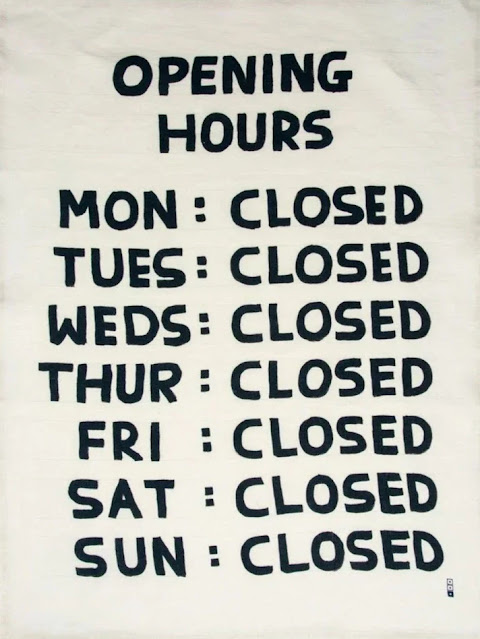



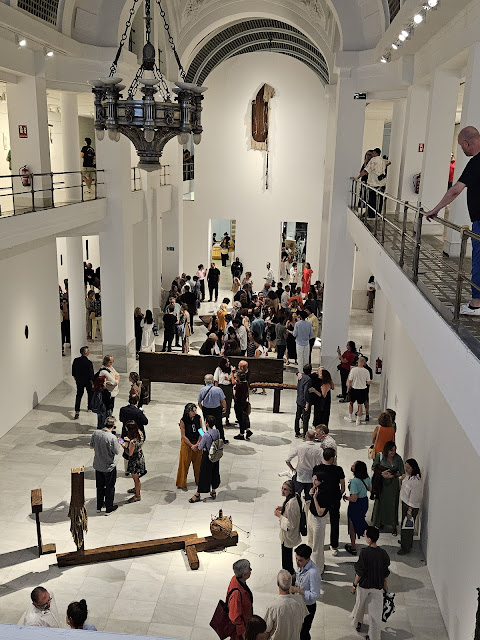


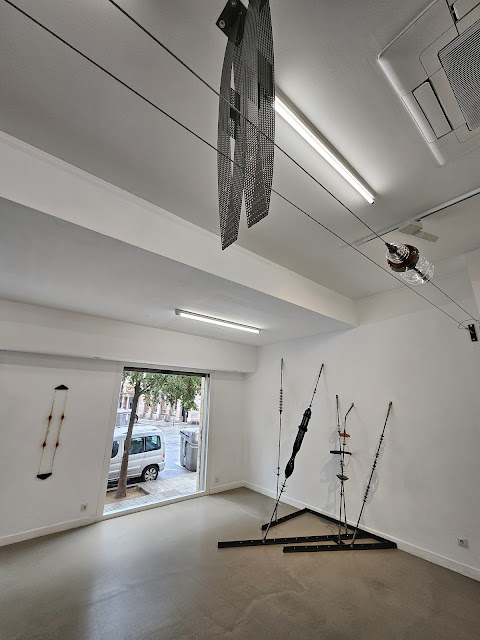











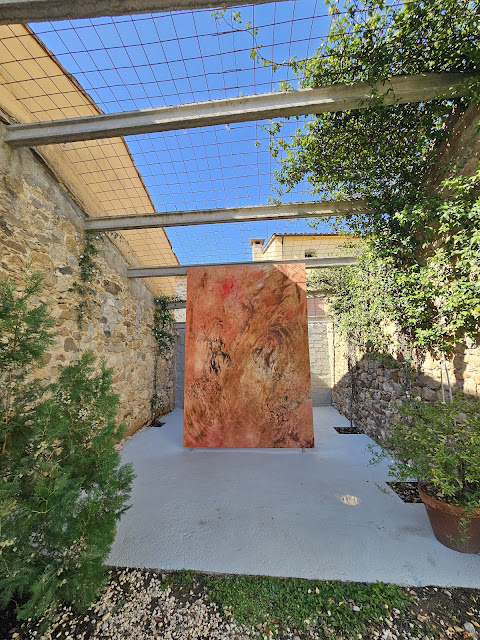




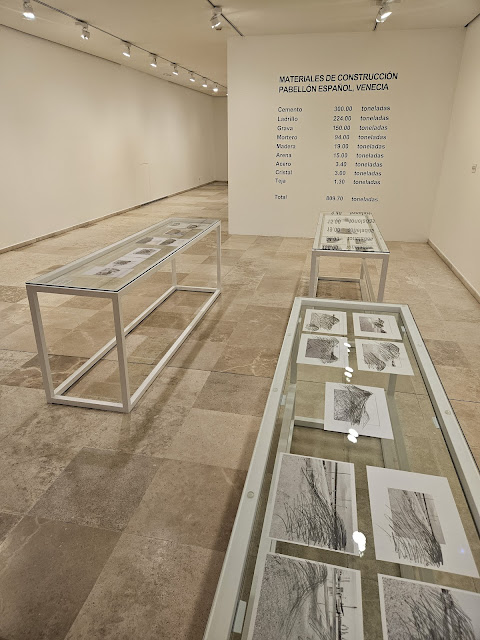













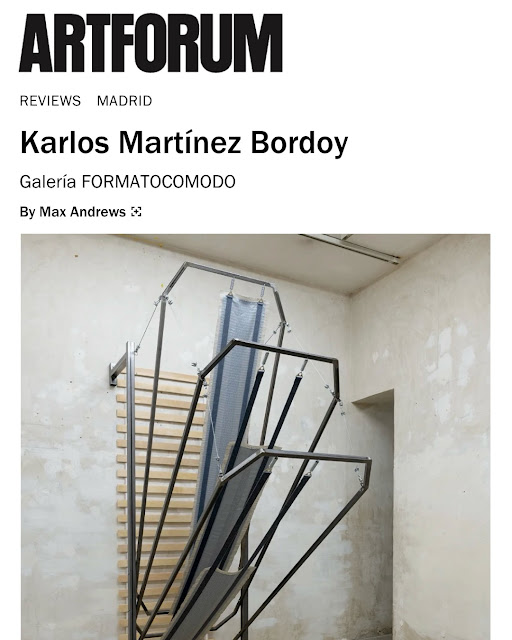


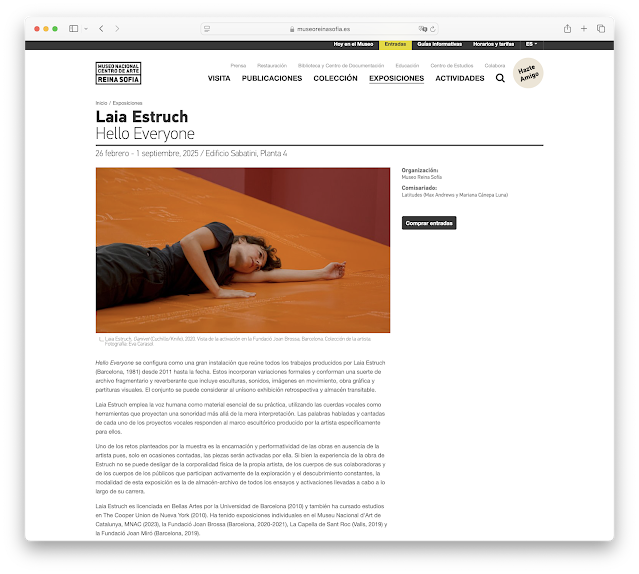









.jpeg)





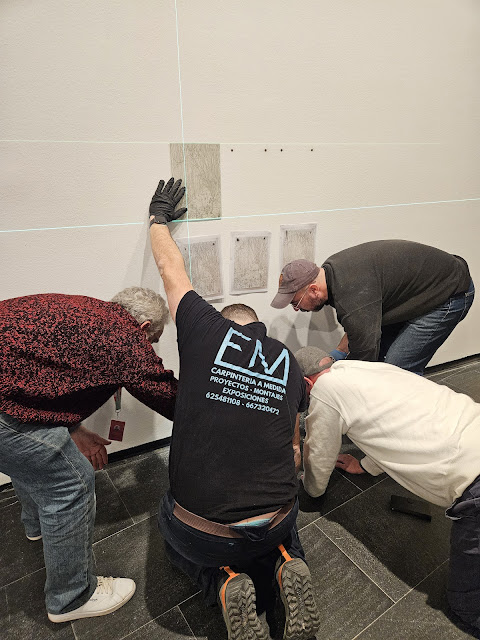

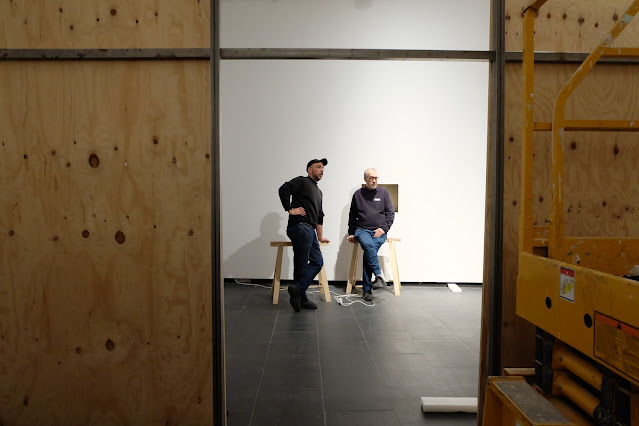




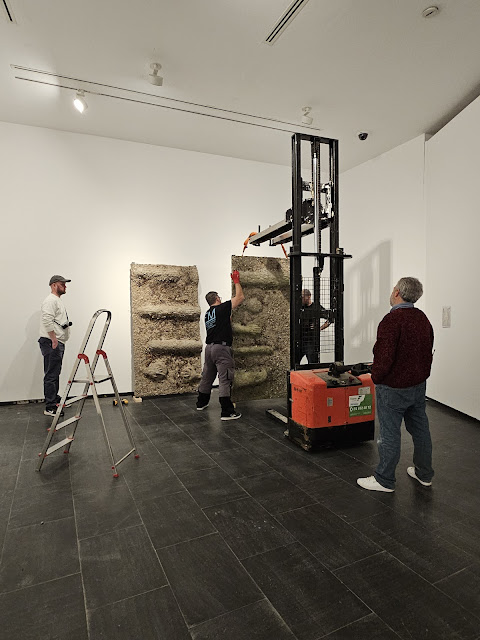



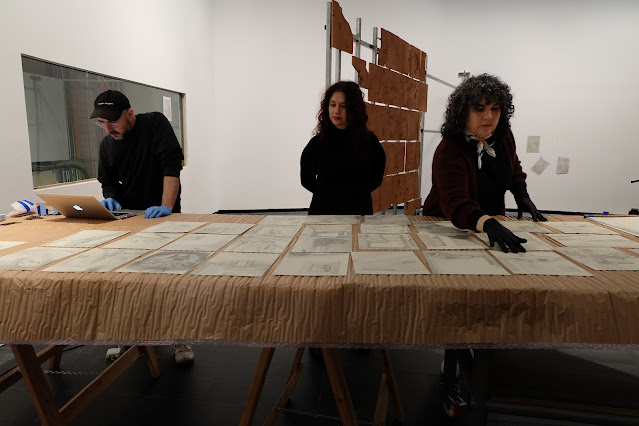

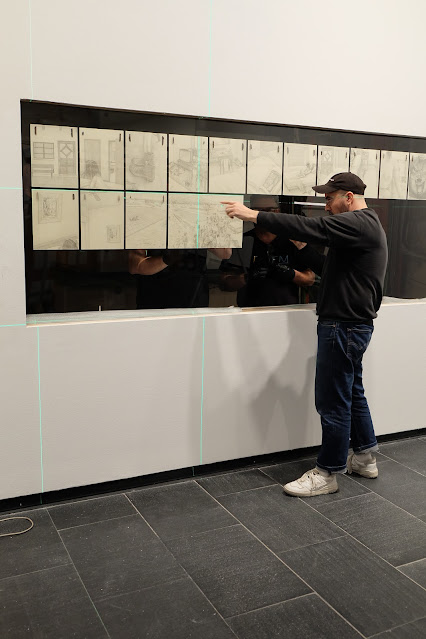



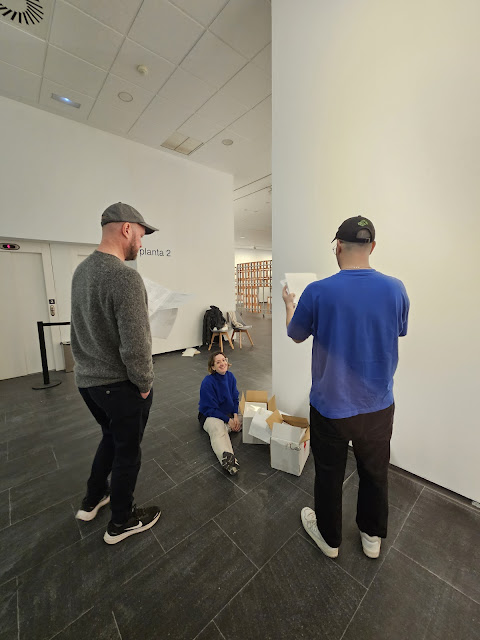

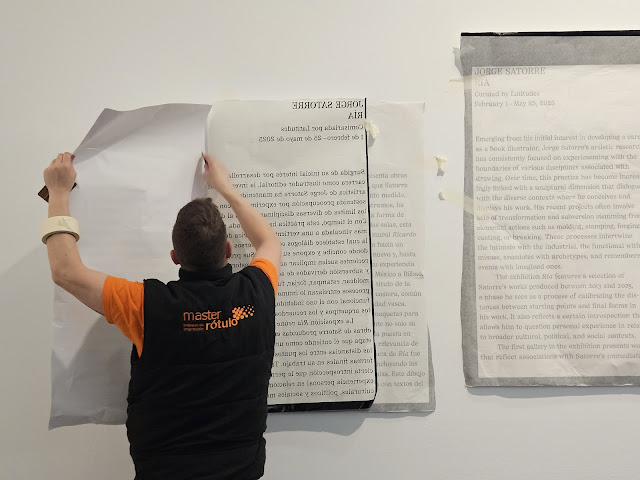

.jpg)
.jpg)





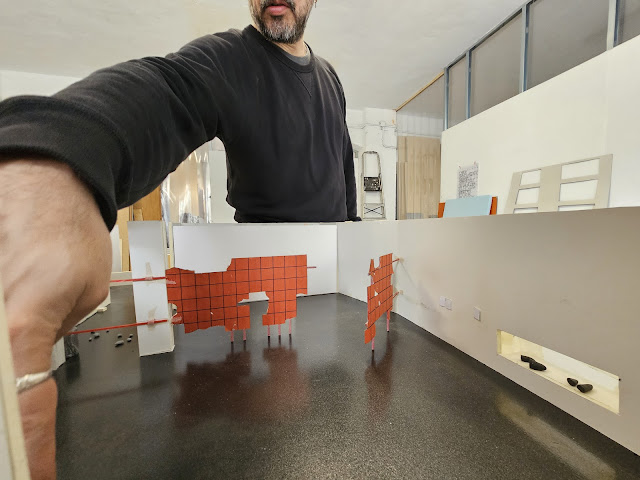




.jpeg)










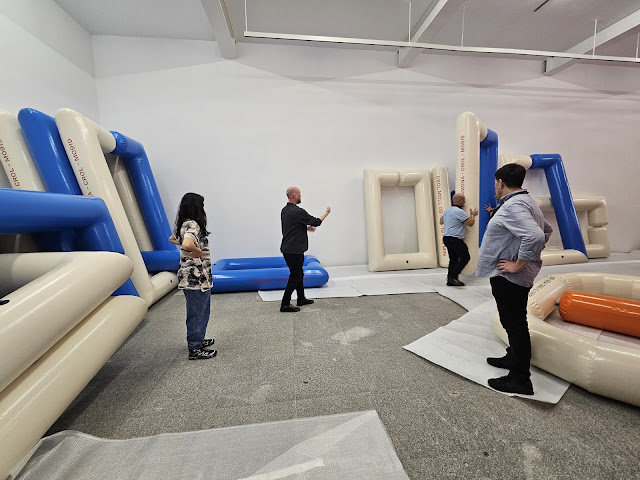









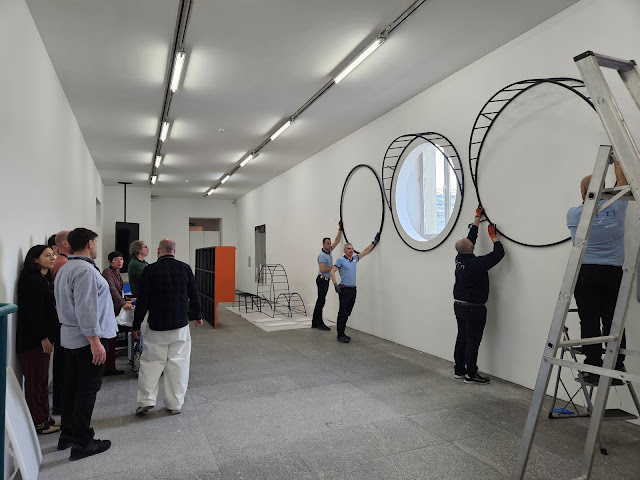
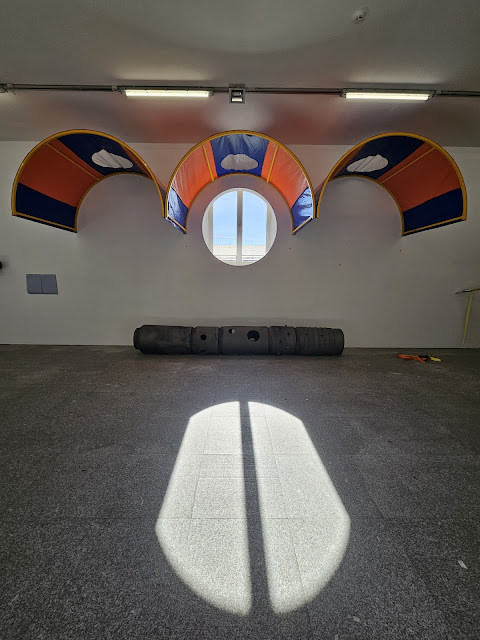
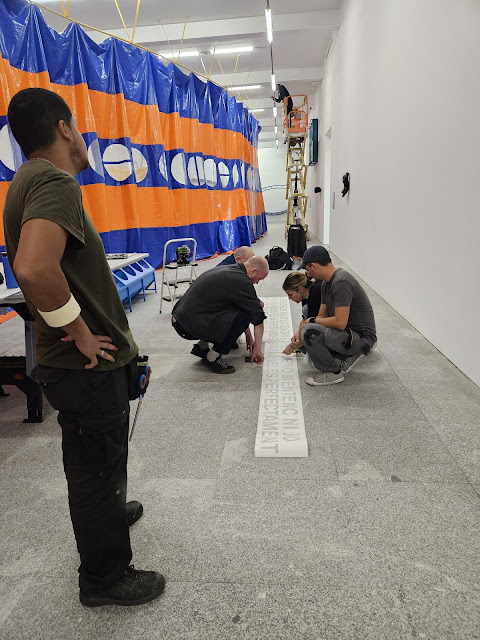
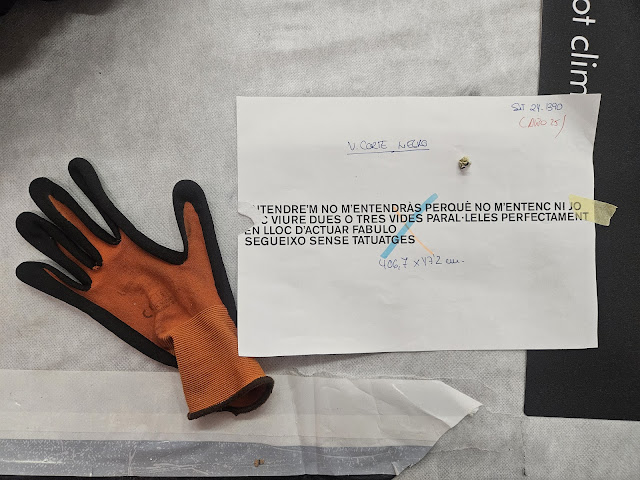



























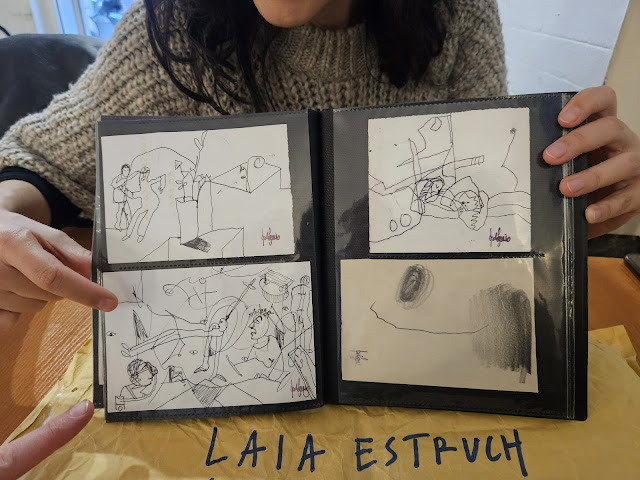






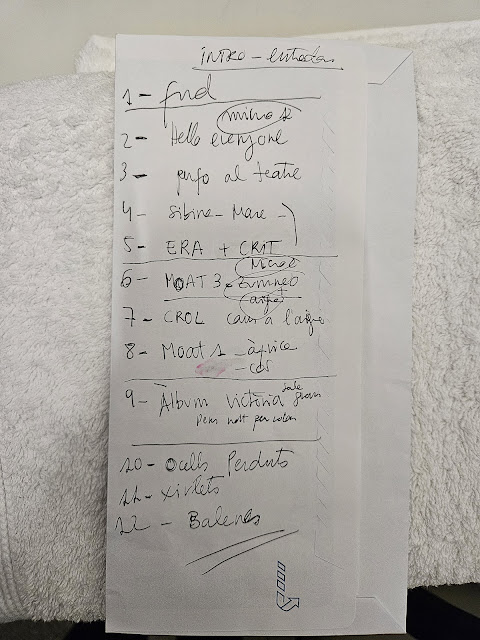






























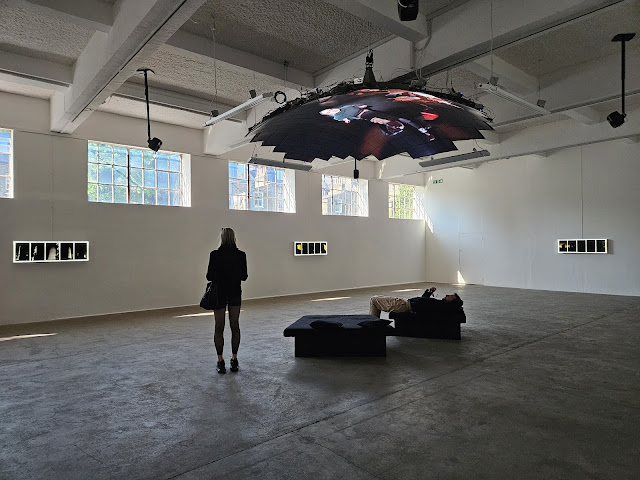
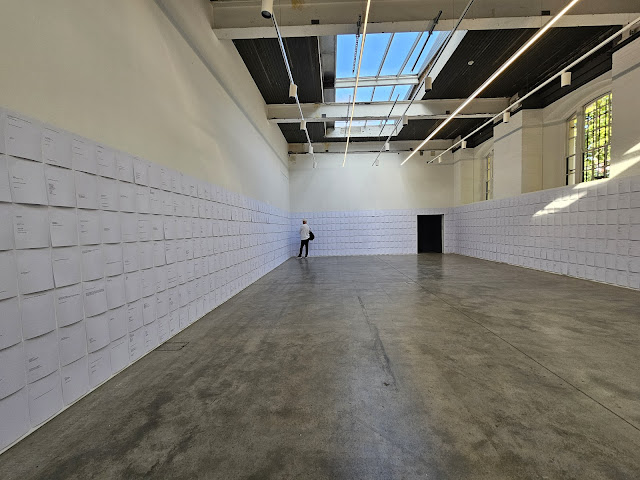



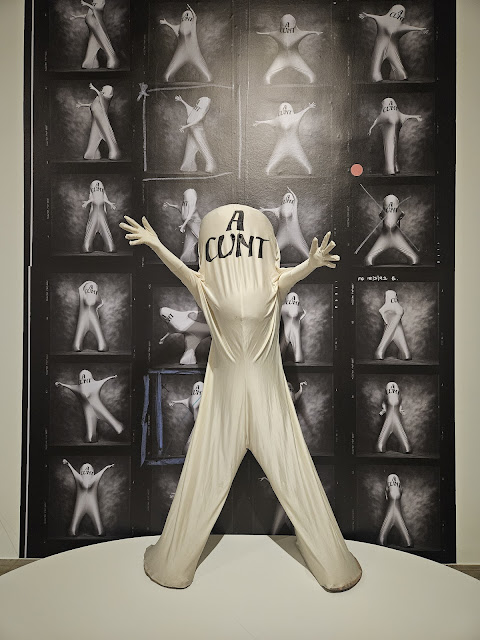





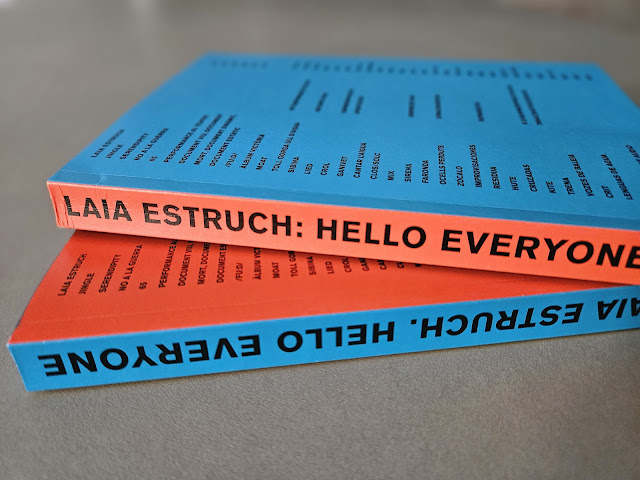
















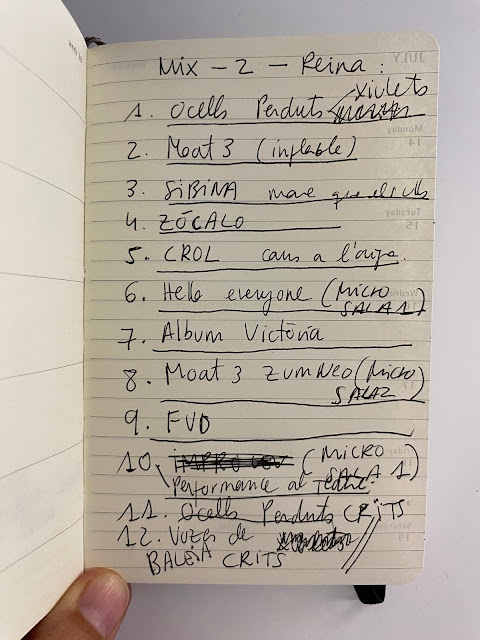
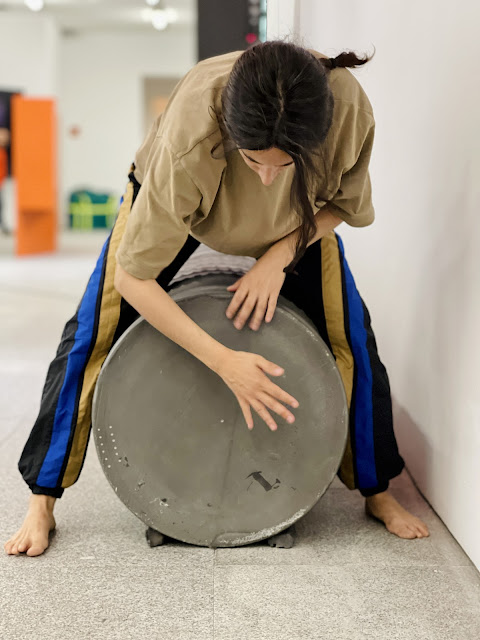










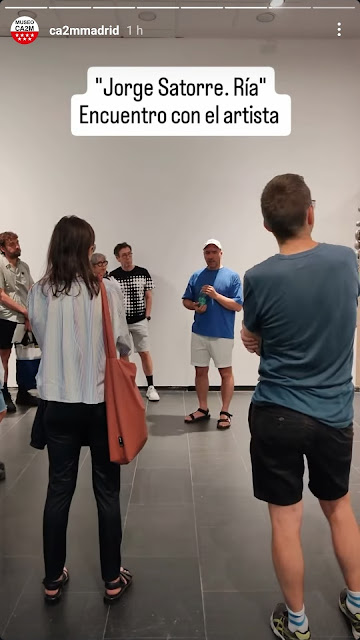



































































































_Logo%20large%202023.png)









_Logo%20large%202023.png)
